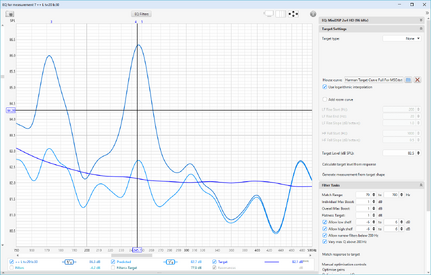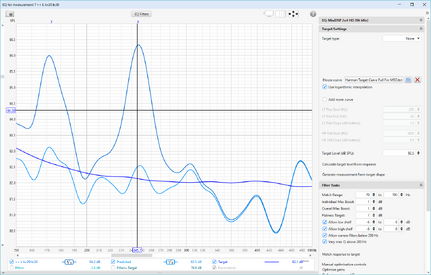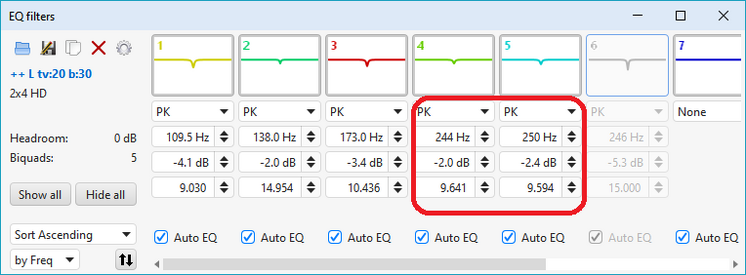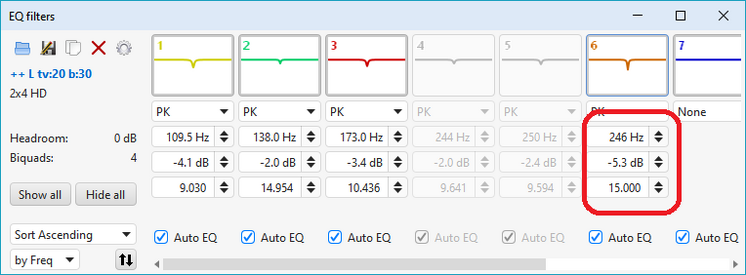dima1stg
Registered
Thread Starter
- Joined
- Dec 3, 2019
- Posts
- 65
Hit an interesting situation while auto-generating filters. Please see attached "REW filter 1" - what took my attention is that there are two very close filters, 244hz and 250hz. The result of them are shown in attached "REW eq 1". I manually changed them to a single filter as shown in "REW filter 2", the result of which is shown in "REW eq 2". The change shows practically no difference between 1st and 2nd filter set. It shows that filter calculation is biased toward lower Q/lower gain per filter even if it means increasing number of filters. It's very interesting to hear the reasoning behind this. Many thanks!


















